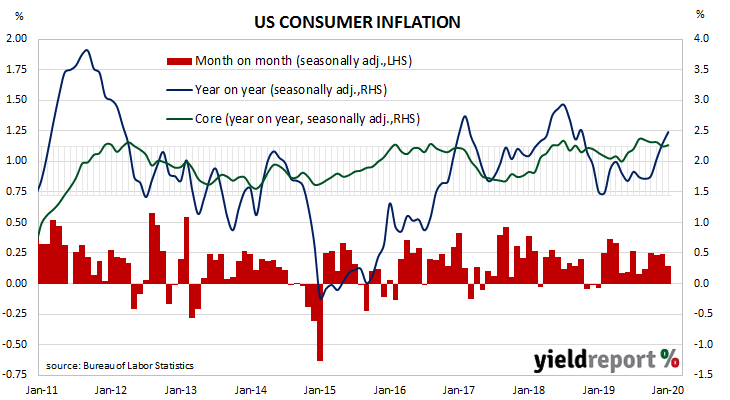The annual rate of US consumer inflation halved from nearly 3% in the period from July 2018 to February 2019 and then subsequently fluctuated in a range from 1.5% to 2.0%. “Headline” inflation is known to be volatile and so references are often made to “core” inflation for analytical purposes. This measure has mostly ranged between 1.7% and 2.3% in recent years.
The latest consumer price index (CPI) figures released by the Bureau of Labor Statistics indicated seasonally-adjusted consumer prices increased by +0.1% on average in January, less than the +0.2% increase which had been expected and lower than December’s +0.2%. However, on a 12-month basis, the inflation rate increased from December’s annual rate of 2.3% to 2.5%.

Core inflation, a measure of inflation which strips out the volatile food and energy components of the index, increased on a seasonally-adjusted basis by +0.2% for the month, in line with expectations but up from December’s +0.1% increase. The annual rate ticked up from December’s 2.2% to 2.3% in January.
ANZ economist Hayden Dimes said the figures “show the US economy is improving and [they] support the argument for the Fed to hold interest rates at current levels.”

